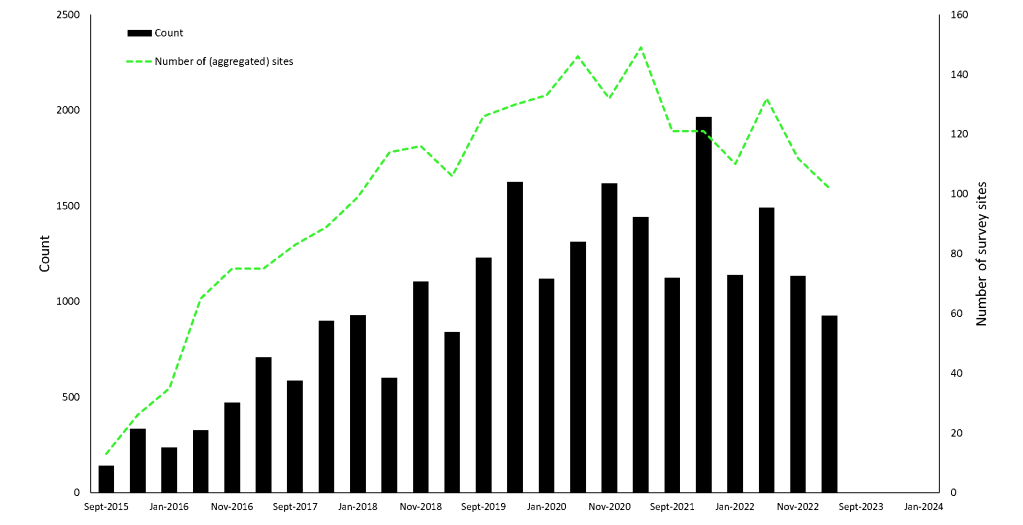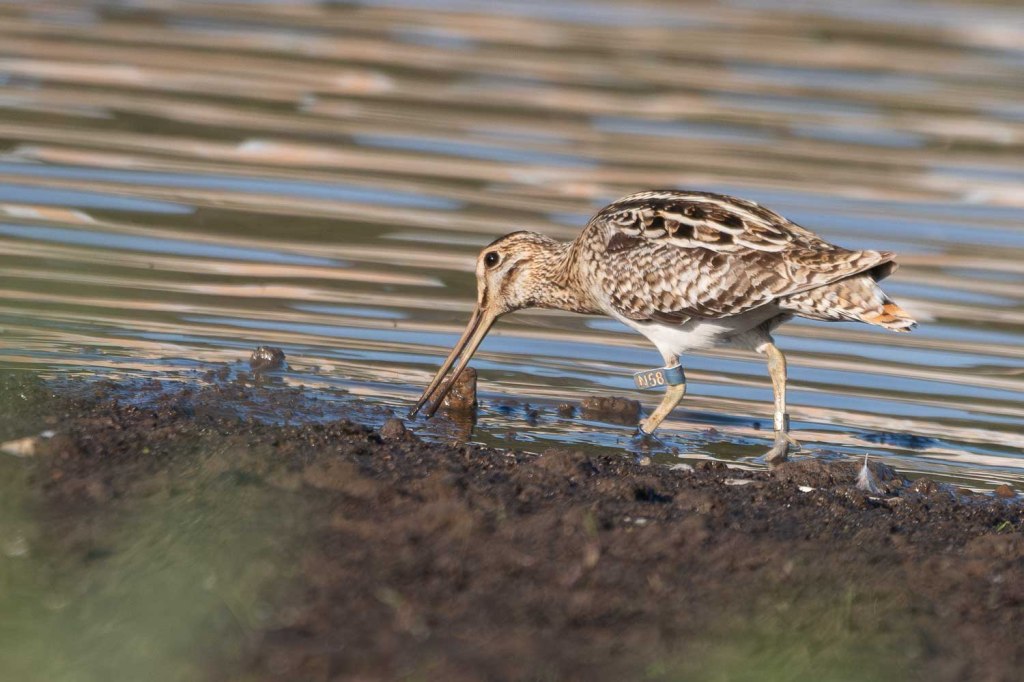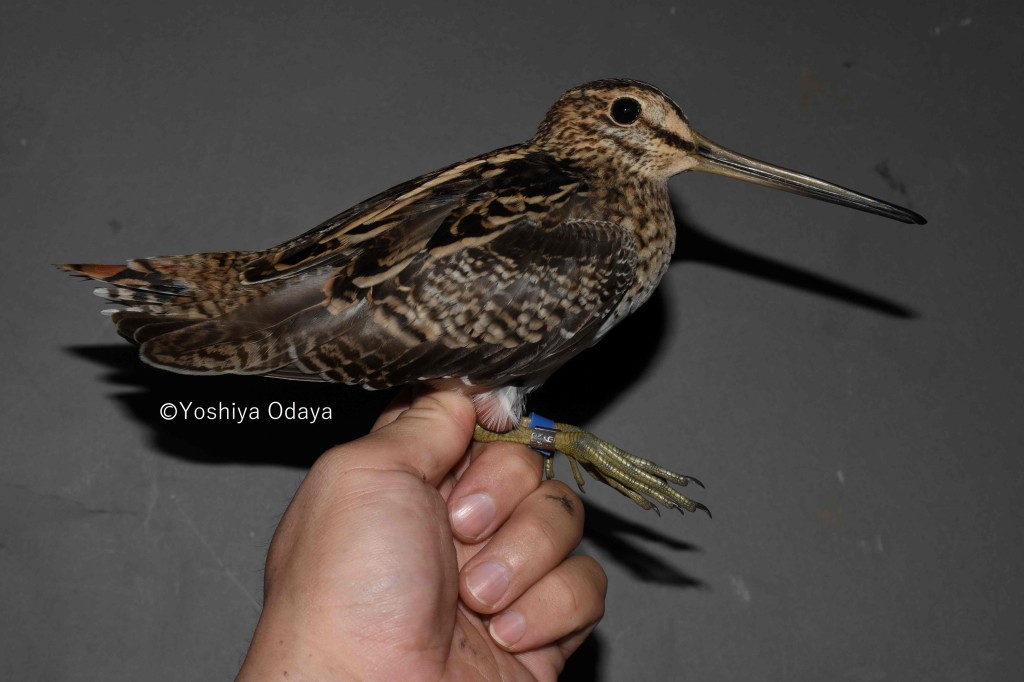Thank you for your patience with my poor communication over the last 12 months. I have finished tidying up the survey results and some fascinating patterns have appeared. Here are some highlights from the results:
- September 2022 had the highest September count ever at 1492 snipe for 132 survey sites. The next highest in September was 1312 for 146 sites in 2020. Much of this we can attribute to the extraordinary wet season we had last year. For example, sites that had unusually high numbers in September 2022 were:
- Jerrabomberra wetlands (ACT) 146 snipe
- Norman Street industrial area (Ballarat) 97 snipe
- Cheltenham Road retarding basin (Melbourne) 83 snipe
- Moyne estuary (Port Fairy) 188 snipe
- November and January were surprisingly lower, which is unusual – 1135 snipe (112 sites) and 927 snipe (102 sites), respectively. Some of this drop is caused by fewer sites being surveyed than normal, but this does not explain all the differences. I have put in a table below of the regional summaries – please note that these regions are groupings of individuals sites, summarised in a way that makes sense to me.
- There were a few sites that also had unusually high numbers in other months:
- Nov – Point Fullarton (Gippsland) 40 snipe – this site is currently threatened with a housing development proposal (sadly, a common story for urban snipe)
- Nov – Smithton (NW Tas) 140 snipe
- Jan – BulBul Crescent / Kekul st wetlands (Newcastle) 126 snipe
- Nov – Moyne estuary (Port Fairy) 211 snipe
- Peterborough on the Victorian coast remains the (consistently) largest site with total counts of 123 (Sept), 158 (Nov) and 161 (Jan)
Most of the September 2023 count data are also entered. So far the total count is around 600 snipe for about 95 sites. These numbers haven’t been carefully error checked yet so these numbers are preliminary. This is one of the lowest September counts since the snipe surveys went national in 2016. This lower count also appears to be due to the slightly earlier timing of the surveys compared with previous years – usually we survey around 1 week later and seems like birds just simply had not arrived yet at some of the south-eastern Australian sites.
In other news, The Wild Bird Society of Japan are tracking snipe again from Hokkaido and the last update from late September, they had a bird somewhere near the Kiewa River valley in north-east Victoria. This is really great news and it has been fabulous to hear about the tracking success of the WBSJ.


First ever international Latham’s Snipe leg flag recovery
We had some very exciting news in September. A Japanese-marked Latham’s Snipe, captured by our colleague ODAYA Yoshiya in Ibaraki prefecture, was photographed at Lismore Lake by Lachlan Cooper. The photos below are from Lismore lake, where the bird was resighted, and of the bird when originally captured. It was banded on 28 August 2021 as a first year, and resighted on 05/09/2023 at Lake Lismore. It is a confirmed age 3 bird (i.e. in its 3rd year).
Here was the capture and banding location in Japan: https://goo.gl/maps/PzStZw2rjWEc4Zk19
And here was the resighting location in Lismore: https://goo.gl/maps/QuCC9U7vDTNTJ1r86
While there have been thousands of resightings of other leg flagged shorebird species over time across the flyway, there has never been a single re-sighting of a Latham’s Snipe outside its country of capture (to our knowledge). And even within its country of capture, leg flag re-sightings of snipe are exceptionally rare.
So this is a ground breaking outcome for capture-based studies on this species.

